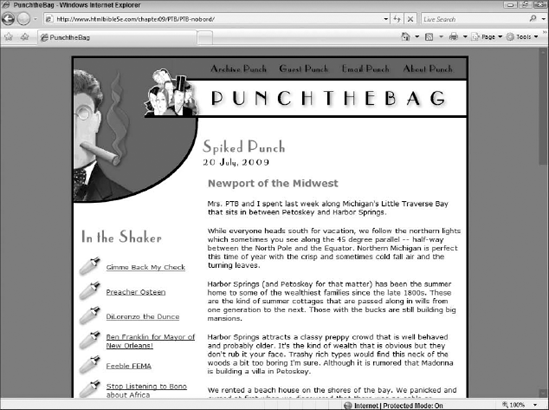Chapter 32. Padding, Margins, and Borders
IN THIS CHAPTER
The CSS Box Formatting Model
Element Padding
Element Borders
Element Margins
Dynamic Outlines
All elements in an HTML document can be formatted in a variety of ways using CSS. Previous chapters in this part of the book covered the CSS basics—how to write a style definition and how to apply it to various elements within your documents. This chapter begins coverage of the concentric areas that surround elements—also known as the box model.
The next chapter continues this discussion, covering colors and background images.
The CSS Box Formatting Model
Although not overtly obvious, all elements in an HTML document are contained within a box. That box has several properties—margins, padding, and borders—that can be configured to help distinguish the enclosed element from nearby elements.
Take a look at Figure 32.1, which shows a document that isn't overtly boxy.
The same document is shown in Figure 32.2, but a thin border has been added to every element courtesy of the following style:
* { border: thin solid black; }Note how all the elements in the document pick up the border in a rectangular box shape. The border becomes much thicker at the intersection of two or more elements.

Figure 32.1. This Web document does not appear overly boxy in appearance.
All elements have a margin, padding, and border property. These properties control the space ...
Get HTML, XHTML, and CSS Bible, Fifth Edition now with the O’Reilly learning platform.
O’Reilly members experience books, live events, courses curated by job role, and more from O’Reilly and nearly 200 top publishers.

